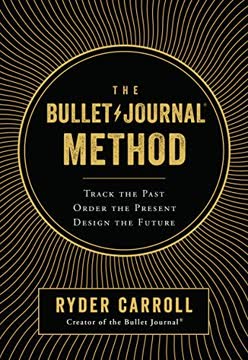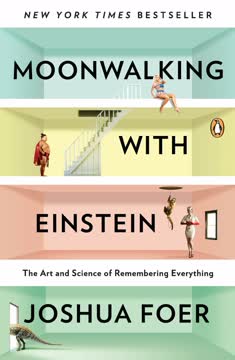Key Takeaways
1. Memory is a skill that can be dramatically improved through training
The key to a perfect memory is your imagination.
Imagination is crucial. The human brain excels at remembering images, especially those that are vivid, unusual, or emotionally charged. By converting abstract information into striking mental pictures, we can dramatically enhance our ability to recall it later. This technique leverages the brain's natural strengths.
Practice makes perfect. Like any skill, memory improves with consistent exercise and application of proper techniques. Regular practice not only enhances memory capacity but also increases the speed at which information can be encoded and retrieved. As these skills become more ingrained, what once seemed like remarkable feats of memory become second nature.
Memory affects all aspects of life. A well-trained memory doesn't just help with party tricks or academic pursuits. It can boost confidence, improve social interactions, enhance professional performance, and even open up new career opportunities. The ability to quickly and accurately recall information is a valuable asset in nearly any field.
2. The journey method is the foundation for remembering lists and sequences
Location is important. Always picture your person at the house you want to remember.
Create mental journeys. The journey method involves visualizing a familiar route and placing items to be remembered at specific points along that route. This could be a path through your home, a walk around your neighborhood, or any sequence of locations you know well.
Leverage spatial memory. Our brains are naturally good at remembering spatial information. By associating items with specific locations, we tap into this innate ability, making it easier to recall not just the items themselves but also their order.
Make it personal. The most effective journeys are those that have personal significance. Using locations that you're intimately familiar with ensures that the "backdrop" for your memories is always clear and easily accessible in your mind.
3. Memorizing numbers becomes effortless by converting them to memorable images
When I look at a number today, I see a person.
The DOMINIC system. This technique involves converting pairs of digits into letters, which then become initials for a person's name. For example, 14 might become AD for Arthur Daley. Each person is then associated with a specific action.
Create complex images. By combining the person and action derived from a series of numbers, you can create a vivid mental scene that represents a longer number sequence. This makes even long strings of digits memorable.
Practice and speed. With regular use, this conversion process becomes automatic. What initially might take conscious effort soon becomes an instantaneous translation from numbers to memorable images.
4. Names and faces can be easily recalled by creating vivid mental associations
Pigeon-hole people! First impressions count! Judge a book by its cover!
Leverage first impressions. When meeting someone new, pay attention to your initial reaction and any distinctive features. These can be exaggerated in your mind to create a memorable association.
Link to familiar faces. If the person reminds you of someone you know or a celebrity, use that as a basis for your mental image. This provides a strong anchor for your memory.
Associate with location. Place your mental image of the person in a location that's relevant to where you met them or something about their life or work. This adds another layer of association to strengthen the memory.
5. Mastering card memorization unlocks impressive mental feats
When I see the 6 of diamonds, I don't see the letters SD; I don't even perceive the card as the 6 of diamonds; I automatically have an image of Sharron Davies, the swimmer, wearing a rubber ring.
Assign people to cards. Create a system where each card is associated with a specific person and action. This converts the abstract symbols of playing cards into vivid, memorable images.
Use journeys for sequences. When memorizing the order of cards in a deck, place these images along a mental journey. This allows you to recall not just the cards but their exact sequence.
Practice for speed. With consistent practice, the process of converting cards to images and placing them on a journey becomes faster and more automatic. This is what allows for impressive feats like memorizing multiple decks quickly.
6. A trained memory enhances learning in various fields, from languages to trivia
You should find that it accelerates your rate of learning quite dramatically. If only I had discovered it when I was at school!
Language learning. Use mental imagery and location techniques to associate foreign words with their meanings. This can dramatically speed up vocabulary acquisition.
Historical dates and facts. Convert dates into memorable images using the DOMINIC system, and place these images on journeys to remember sequences of events.
General knowledge. Apply these techniques to memorize large amounts of trivia, making it easier to recall facts on a wide range of subjects.
7. Memory techniques can be applied to excel in games, sports, and even gambling
I don't consider myself a gambler. I play to a strategy not a system.
Improve game performance. In games like chess, use memory techniques to recall strategies, opening moves, and previous games. This can give you a significant advantage over opponents.
Enhance sports skills. Apply memory techniques to remember complex sequences of movements or plays in sports, improving your overall performance.
Gain an edge in gambling. While not encouraging gambling, the book demonstrates how a trained memory can be used in games like blackjack to keep track of cards and gain an advantage.
8. The art of memory has ancient roots but remains relevant today
I find this passage from Ad Herrenium particularly uncanny. As you know, people play an essential part in my approach to memory.
Ancient techniques still work. Many of the memory techniques described in the book have roots in ancient Greek and Roman practices, showing their enduring effectiveness.
Adaptation for modern use. While the core principles remain the same, these techniques have been adapted and refined for contemporary applications.
Universal cognitive principles. The fact that similar memory techniques have been independently developed across time and cultures suggests they tap into fundamental aspects of human cognition and memory.
Last updated:
Review Summary
How to Develop a Perfect Memory receives mostly positive reviews, with readers praising its practical techniques and easy-to-follow style. Many find the journey method and Dominic System particularly useful for memorizing various types of information. Some readers note the book's repetitive nature and focus on specialized memory feats. Overall, reviewers appreciate the author's credibility and the book's potential to improve memory skills, though some feel certain sections are less relevant to everyday life.
Similar Books









Download PDF
Download EPUB
.epub digital book format is ideal for reading ebooks on phones, tablets, and e-readers.







